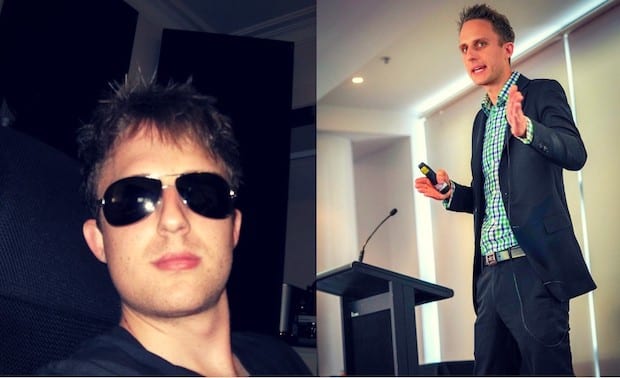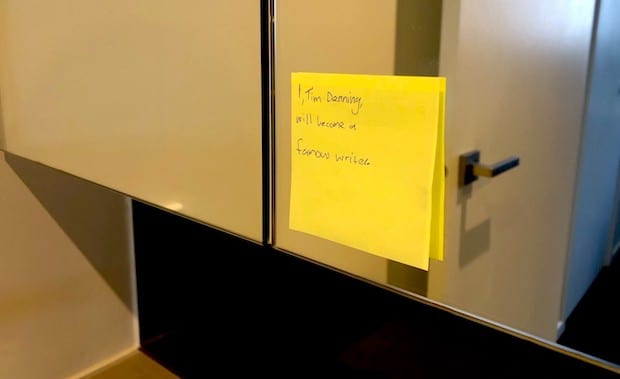Success Advice
Why You Should Ignore The LinkedIn Gurus And Communicate Like A Human Again

There is an increasing number of LinkedIn Guru’s popping up all over the place. They come offering a dream that will almost always guarantee you failure on a platform like LinkedIn. Within my own company, I have been able to make it to the top 1% of experts in my field and reach extraordinary levels of engagement.
I don’t tell you this to impress you; I tell you this because hopefully it will allow you to learn some of the lessons that I found out through trial and error. What I am about to share with you is the no BS approach to creating something on LinkedIn that is truly unique.
LinkedIn can be a powerful tool when used correctly although it requires you to go beyond yourself and think about other people. It requires you to cut through the noise and do something that so few people embark on.
So forget the LinkedIn Guru’s and try my ten tips so you can start communicating like a human again:
1. Emotive posts go viral
Rule number one is emotion is what creates viral posts on LinkedIn and this only comes from acting like a human and not like a robot from a company. The easiest way to prove this is to click the three dots below “publish a post” on your LinkedIn homepage, and click “Top Updates.”
Read through all the posts that have more than 1000 likes and you will see they all have one thing in common: each post is emotive, real, authentic and spreads some form of positivity. This didn’t happen by accident; it’s because LinkedIn gurus have it all wrong – no one cares about self-promotion.
What I do is find something I’m passionate about – like success – and then create posts around this passion that are written in a human way, but have a slight slant towards business. For example, if you are going to post about winning a grand final in your favourite sport then make sure you tie it back to how this experience has helped you at work or in your business.
80% of business is psychology, and only 20% is the mechanics, so content on LinkedIn that taps into our psychology is a great way to get people talking to you and interested in what you do. Two examples of extremely popular posts from my LinkedIn page are:
1. A post I wrote about Addicted2Success raising $50k USD to build two schools in Laos and Africa.
2. A post I wrote about my $100M friend who became homeless and the lessons he taught me.
These posts are straightforward in their approach, but hugely powerful because they deliver emotion on a plate and validate the reason why I do business in the first place.
2. Ignore anyone who says “Personal Brand”
I hear a lot of LinkedIn gurus use the phrase “personal brand” too often. Personal brand really just translates to “I want to promote myself and tell you how good I am.” Again, this way of communicating is boring and no one is interested in this way of talking.
” Your brand will indirectly become more known when you add value to your LinkedIn connections. If you’re not adding value and just promoting yourself, then I promise you, you will be ignored ” – Tim Denning
3. It’s okay to add people you haven’t met
There seems to be this unwritten rule that you can’t add connections on LinkedIn that you don’t know or haven’t met – this is total BS. If you only add people who you know, then you will have a small circle of people in your network, and you will be less likely to find new ideas.
There are some weirdo’s on LinkedIn who get offended when you add them and haven’t met them, and then send you this big long message about why you need to prove yourself to them. Forget those jokers as they only make up .01% of LinkedIn users and don’t let them put you off.
Find people who you don’t know from companies you are interested in and add them so you can start to expand your world. Don’t go crazy though and don’t be a spammer. I have added people a small number of people I don’t know, and it’s got me some great face-to-face meetings because of it.
Humans are curious, so if you add someone you don’t know, and they also realise they don’t know you, they are highly likely to look at your profile, and if what you have to say is interesting, they will probably contact you.
One thing to remember though if you take this approach is to make sure your profile is top notch otherwise it won’t resonate with people you are adding, and they will decline your request.
4. Don’t send spam Inmails
There are lots of nutjobs on LinkedIn that send these giant long spammy Inmails to people they have never met. Don’t be one of these wacko’s, as most people will just ignore you. The rule I follow is no more than nine sentences in an Inmail. The majority of messages are read on people’s mobile phones and 30 lines of words will be too long for them to read.
Secondly, imagine you met someone for the first time and the first thing they did was give you a ten minute sales pitch about their product before you have even had a chance to say your name. You are guaranteed to dislike this person so if you wouldn’t act like this in real life, why would you do this on LinkedIn? The answer – you wouldn’t.
5. Make it not about you
To come across as a human on LinkedIn you need to not make it all about you. When you post, try and think of ways you can add value to your audience and share tips that people will find interesting.
Avoid talking about your company, in fact, shut up about your company as much as possible! No one wants to hear a boy scout or girl scout who keeps waffling on about how great their company is. It’s okay to mention it here or there just don’t over do it.
The LinkedIn gurus I have seen say to post everything that your company ever says and what ends up happening is you have a news feed all about your own interests.
No one will listen to this way of communicating, and you will be ignored by most, except the other people in your company who may write comments of agreement under your post because they have drunk the same cool aid as you.
6. It’s a conversation starter and keep in touch tool only
LinkedIn gurus keep telling me that I should be pitching services and sharing customer testimonials on my feed. They then tell me I should track these prospects in a CRM and mark the source as LinkedIn.
Let me tell you one simple thing to keep in mind: LinkedIn is a conversation starter and a keep up to date with people tool only. Through these two actions, you will get sales prospects but these people won’t become prospects until you take the conversation off LinkedIn.
What LinkedIn does is: establish you as an expert, keeps people up to date with what you’re doing, show others who you really are, help you find new people to talk with, and lastly, it allows you to be you and add value to other people’s lives.
There is not a person in history that I have seen get contacted by someone on LinkedIn, receive one message about an offer or description of a product, and then go on to become a customer shortly after. What I just described is a myth.
7. Help people out
This tip is quite straightforward but easily forgotten. When someone reaches out asking for help, see if you can assist them. It’s not hard to do and it’s a quick way to get people returning the favour and introducing you to cool, new people that you didn’t know before.
I practice this regularly and I often get random introductions to people that are highly valuable and take away all the pain of looking for people to maybe do business with in the future. If someone asks for an intro and you can’t help or add value, just say no, it’s fine to do so.
8. Comment on other people’s posts
It can take a lot of guts to write a post on LinkedIn and share it with your business network. When someone you know takes the plunge and does this, leave them a comment and say thank you if you found their post useful.
It’s a small act, but people will really appreciate it and do the same when you post your own content. Ahhhh…the law of reciprocity comes in handy again ☺
9. Try long form posts
Social media has become saturated with short bursts of content but there is starting to become a trend that is going in the opposite direction.
I’m not saying you tell your life story on LinkedIn, what I am saying is to try and write something now and then that is more than 1000 words, on a topic that you are knowledgeable on. The results of doing this will surprise you.
10. Make your presence human with video
With platforms like Periscope, Snapchat, Facebook Video, Instagram Video and Vine becoming increasingly popular, experiment with a video now and then. It doesn’t have to be shot with a professional camera and your phone should be good enough.
Make sure you are in a quiet spot, the lighting is good, and you pick a topic that you can say off the top of your head. Then, shoot a video of 5-6 minutes and post it on LinkedIn. Video brings a human aspect back to your posts and it’s easy to do.
If you want to go to the next level, try filming a short tutorial on something and then add some screenshots into the video using free software like iMovie. Again, you are showing you’re human and delivering value to people and it will pay dividends if you do it regularly.
What’s your number one tip for LinkedIn? Do you have any cool LinkedIn stories? Let me know in the comments section below or on my website timdenning.net and my Facebook.
Change Your Mindset
The Silent Skill That Makes People Respect You Instantly
What truly earns respect and why most people go about it the wrong way

Everybody craves respect but not everyone earns it. Some people believe that a title, years of experience, or a position of authority automatically entitles them to respect. (more…)
Entrepreneurs
The Essential Skills Every Entrepreneur Needs In 2026
Success in the digital age isn’t about luck. It’s about mastering the skills that separate dreamers from doers.

When I was 22 years old, I started my first side hustle as a ghostwriter. (more…)
Did You Know
The Success Patterns You Inherited (And Didn’t Notice)
Your family history may hold the key to why you think, act, and feel the way you do today.

Who are you? Your experiences and your family’s narratives and legacies contribute to your identity. Your ancestry contains individual traits and forces that have been inherited over the years. It also carries the fights and victories of your forebears and older family members. (more…)
Shift Your Mindset
11 E’s That Define Every Great Leader And Why Most People Miss Them
If you’ve ever felt the pull to lead, this is your roadmap to turning inner potential into lasting influence.

What Is Leadership, Really?
Leadership is far more than a title or position. It’s the ability to envision a future, inspire others, and align people toward a shared goal. (more…)
-

 Change Your Mindset4 weeks ago
Change Your Mindset4 weeks agoThe One Leadership Habit That Separates the Great From the Forgettable
-

 Personal Development3 weeks ago
Personal Development3 weeks agoThis Silent Habit Might Be Sabotaging Your Career
-

 Business3 weeks ago
Business3 weeks agoWhy Your E-Commerce Fulfilment Is Probably Broken (And How to Fix It)
-

 Shift Your Mindset2 weeks ago
Shift Your Mindset2 weeks ago11 E’s That Define Every Great Leader And Why Most People Miss Them
-

 Did You Know2 weeks ago
Did You Know2 weeks agoThe Success Patterns You Inherited (And Didn’t Notice)
-

 Business2 weeks ago
Business2 weeks agoThe Hidden Money Pit in Your Operations (and How to Use It)
-

 Entrepreneurs1 week ago
Entrepreneurs1 week agoThe Essential Skills Every Entrepreneur Needs In 2026
-

 Change Your Mindset6 days ago
Change Your Mindset6 days agoHow to Turn Your Mind Into Your Greatest Asset (Instead of Your Enemy)




















4 Comments